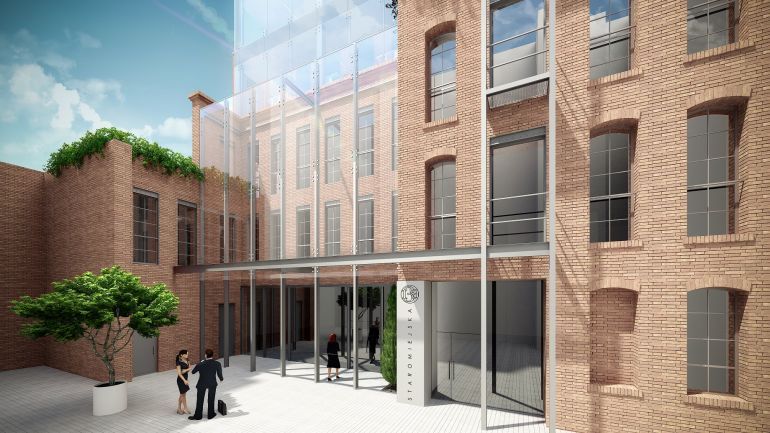Almost each big city has places which constitute about their infamous image – degraded postindustrial areas, old factories, ruins of buildings or neglected tenement houses, which have their glory days a way behind them. Such structures or areas have a negative impact on the image of the surrounding neighborhood or even districts. In result, they scare instead of attract. There are some cases when the whole city is not an attractive place to visit, work or live due to an old and ruined development. This situation especially concerns typically industrial centers in the phase of the blooming period. A solution to the problem of ruined buildings, and thus a good way for healing the urban structure is revitalization.
Bilbao – model example
The flagship example of a successful revitalization process, which completely changed the character of a city, is situated in the northern Spain – Bilbao. The existence and functioning of this center was based on the metal and shipyard industry. However, the fall of these branches contributed to the fact that the city plunged into crisis. In order to overcome the economic collapse, the Strategic revitalization project of metropolitan area was adopted in 1989. One of its priorities was urban recovery including e.g. revitalization projects of certain districts. For instance, many structures were restored in the city and new buildings such as the famous Guggenheim Museum or music and conference center Euskalduna were realized. In result of the taken actions, Bilbao became a cultural center of the region. There is even a notion such as „Bilabo effect” in the literature that refers to the success of this city.
In Poland we may also point out a postindustrial center that is successively revitalized. It is Łódź – the old center of the textile industry. At present, projects aimed at renovation of the old development were realized or are still realized at maintenance of unique industrial architecture which characterizes the city of Łódź.
It is worth mentioning that the revitalization is not only limited to the spatial issues in case of cities. In reality, it is a much broader phenomenon that also includes social and economic aspects. For instance, next to revitalization of the urban structure in Bilbao, many programs aimed at social community were adopted. A similar situation occurs in the case of Łódź.
Districts are new again
Apart from the whole urban structures, revitalization may also include only certain areas of the city. The example is the Cracow Zabłocie district, whose postindustrial character made that it was negatively associated by the inhabitants of the capital of Little Poland. This image has changed within last years. Postindustrial and degraded areas were replaced by such buildings as the campus of Cracow Academy, Museum of Contemporary Art MOCAK, multifamily residential complexes and lofts.
Success on a micro scale
Finally, revitalization may also concern single structures – historical but ruined tenement houses or old factories in which cultural centers, public utility buildings or structures performing commercial functions are realized. This phenomenon has recently been very popular among investors and developers functioning in the office industry. Instead of building from a very beginning, they locate offices in revitalized tenement houses or buildings. In spite of the fact that costs of such investments may be initially higher in comparison to building of an office, still a lot of representatives of the office sector decide to choose such form. It is worth mentioning that all activities taken by them to revitalize the old development are beneficial from the point of view of both local authorities and the nearest surrounding, because the renovated buildings heal and even enrich the urban structure. These buildings are most often perfectly connected thanks to the character and architecture of the surrounding, especially in the case of historical development. Such approach is applied by the UNIMOR Development SA company at realization of the Pomerania Office Park complex, which is being realized in the historical district of Gdańsk. This investment is being built in effect of revitalization of the complex of buildings localized in the neighborhood of Żabi Kruk, Wilcza and Rzeźnicka Streets. The complex will be integrated into development of Stare Przedmieście in Gdańsk and it will emphasize its assets and history. This project is also an example of cooperation and support of local authorities by private entities in the revitalization program of degraded areas in Gdańsk, which has been realized since 2009. Another office investment which is going to be realized as an effect on revitalization is Staromiejska 13a. A small office, which is being realized in the building of a historical Młyn Parowy in Katowice, will refer to a historical function of the structure by its architecture.

